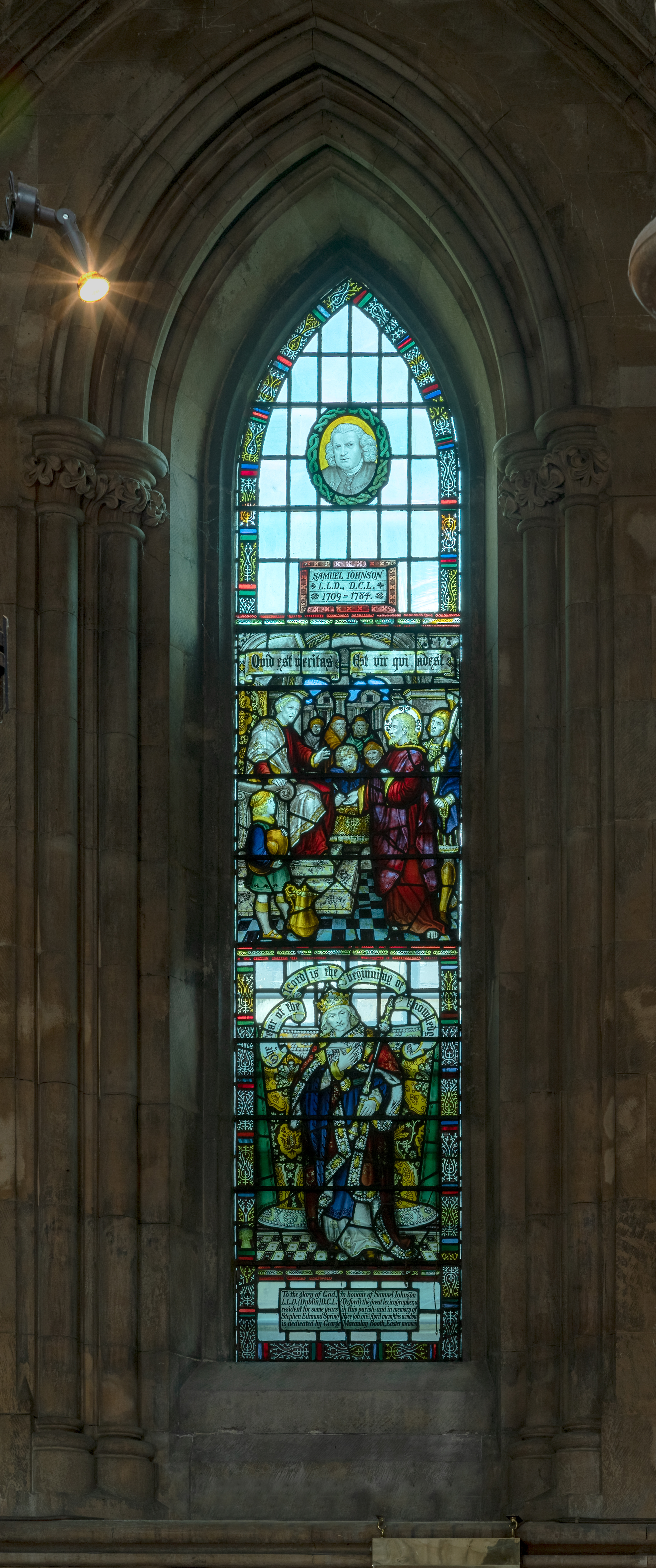Written by the Venerable Dr Jane Steen, Archdeacon of Southwark
Hodge is Southwark Cathedral’s newcomer – but he also opens a door on history. If you enter the Cathedral and look at the stained glass window above the north west door, you will see a roundel depicting Dr Samuel Johnson, creator of the first great English dictionary and, more importantly, the owner of the original Hodge.
Johnson came to London from Lichfield in 1737. In 1763, he met the Scots lawyer James Boswell who would become his biographer. By that time, he was an established literary figure and in 1765, he met the Thrale family, owners of the Anchor brewery in Park Street. We know that Johnson was very familiar with Bankside and what is now the Cathedral parish and we also know how much he cared for Hodge.
The magisterial Dictionary might not seem to promise a cat lover. Johnson defined ‘cat’ as ‘a domestic animal that catches mice, commonly reckoned by naturalists the lowest order of the leonine species’. But the Dictionary was not always the last word. ‘I shall never forget’, Boswell wrote, ‘the indulgence with which he treated Hodge, his cat: for whom he himself used to go out and buy oysters, lest the servants having that trouble should take a dislike to the poor creature’. Oysters were cheap and plentiful in the eighteenth century. By the time Johnson bought them, Hodge had been with him for many years and was too ill and old to eat other food. Hodge certainly died before 1778 when he was the subject of a published Elegy by Percival Stockdale in which we learn that he was a black cat who ‘never failed his thanks to purr | Whene'er he stroaked his sable furr’. His successor was of a different hue. On 18th November 1783, Johnson wrote to Susanna Thrale and mentioned ‘Lily the white kitling, who is now at full growth and very well behaved’.
Johnson was unusual for his time in having a care for cats and other animals (he once remonstrated with his wife for striking a cat in front of her maid). Stockdale’s poem and Boswell’s account both testify to his regard for Hodge. Boswell recollected him ‘scrambling up Dr. Johnson’s breast, apparently with much satisfaction, while my friend smiling and half-whistling, rubbed down his back, and pulled him by the tail; and when I observed that he was a fine cat, saying, “why yes, Sir, but I have had cats whom I liked better than this;’ and then as if perceiving Hodge to be out of countenance, adding, ‘but he is a very fine cat, a very fine cat indeed’. Perhaps Hodge gained in Johnson’s affection over time because Boswell is still writing about Hodge when he describes how once ‘in a sort of kindly reverie,’ Johnson ‘bethought himself of his own favourite cat’.
We don’t know whether Johnson brought the original Hodge to Southwark, but he follows a very fine cat as his predecessor. In time, the modern Hodge may well be a favourite cat for many who see him in person or in pictures as he settles down in Southwark Cathedral.
The Ven Dr Jane Steen, Archdeacon of Southwark

Stained glass window featuring Samuel Johnson by Charles Eamer Kempe 1907. Located in North West Wall and North Aisle